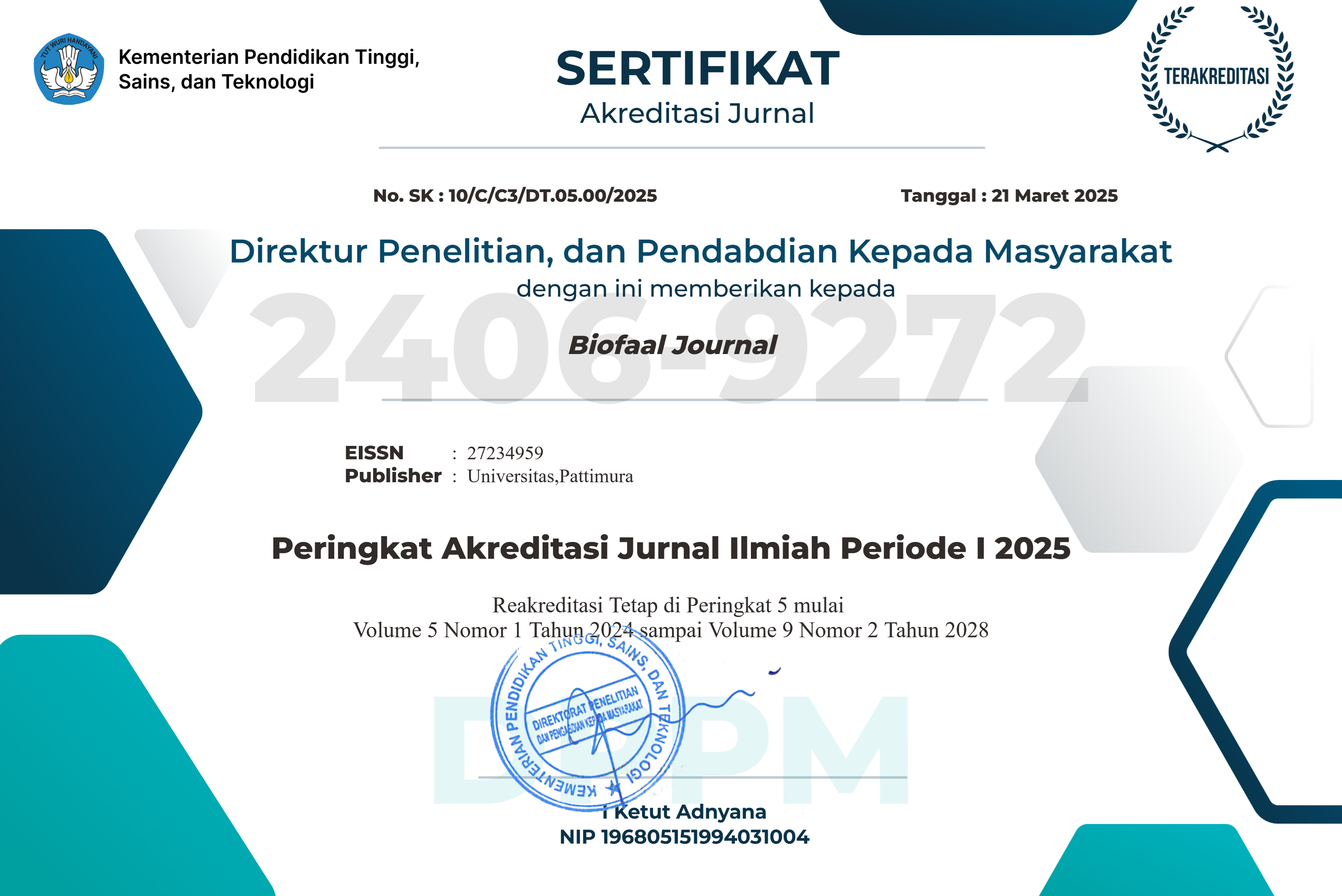PENGARUH PENAMBAHAN MADU GALO-GALO TERHADAP AKTIVITAS ANTIBAKTERI KOMBUCHA KULIT NANAS DAN AIR KELAPA
Abstract
Kombucha is a fermented beverage known for its various health benefits, one of which is its antibacterial properties, making it a potential base for soap production. This study aims to evaluate the effect of adding Galo-Galo honey on the antibacterial activity of kombucha made from pineapple peel and coconut water waste. Fermentation was carried out for 15 days, and observations were made on pH value, total titratable acidity (TTA), and antibacterial activity against Escherichia coli using the disk diffusion method. The study was designed using a completely randomized design with three repetitions. The results showed that the higher the concentration of Galo-Galo honey added, the more significantly the kombucha pH decreased (p < 0.05), with the lowest pH found in the 25% honey treatment (3.09 ± 0.02). The highest total titratable acidity was also found in the 25% honey treatment (1.33 ± 0.11), along with the decrease in pH, indicating an increase in organic acid content. The antibacterial activity test showed that kombucha with a higher honey concentration had a larger inhibition zone against E. coli, with the largest inhibition zone found in the 25% honey treatment (11 ± 1.26 mm). The addition of Galo-Galo honey was proven to enhance the chemical properties of kombucha and strengthen its antibacterial activity.
Downloads
Copyright (c) 2024 Linda Wati, Novelina Novelina, Reni Koja, Ratni Kumala Sari

This work is licensed under a Creative Commons Attribution-NonCommercial-ShareAlike 4.0 International License.
1. Author retain copyright and grant the journal right of first publication with the work simultaneously licensed under a creative commons attribution license that allow others to share the work within an acknowledgement of the work’s authorship and initial publication of this journal.
2. Authors are able to enter into separate, additional contractual arrangementfor the non-exclusive distribution of the journal’s published version of the work (e.g. acknowledgement of its initial publication in this journal).
3. Authors are permitted and encouraged to post their work online(e.g. in institutional repositories or on their websites) prior to and during the submission process, as it can lead to productive exchanges, as well as earlier and greater citation of published works.








